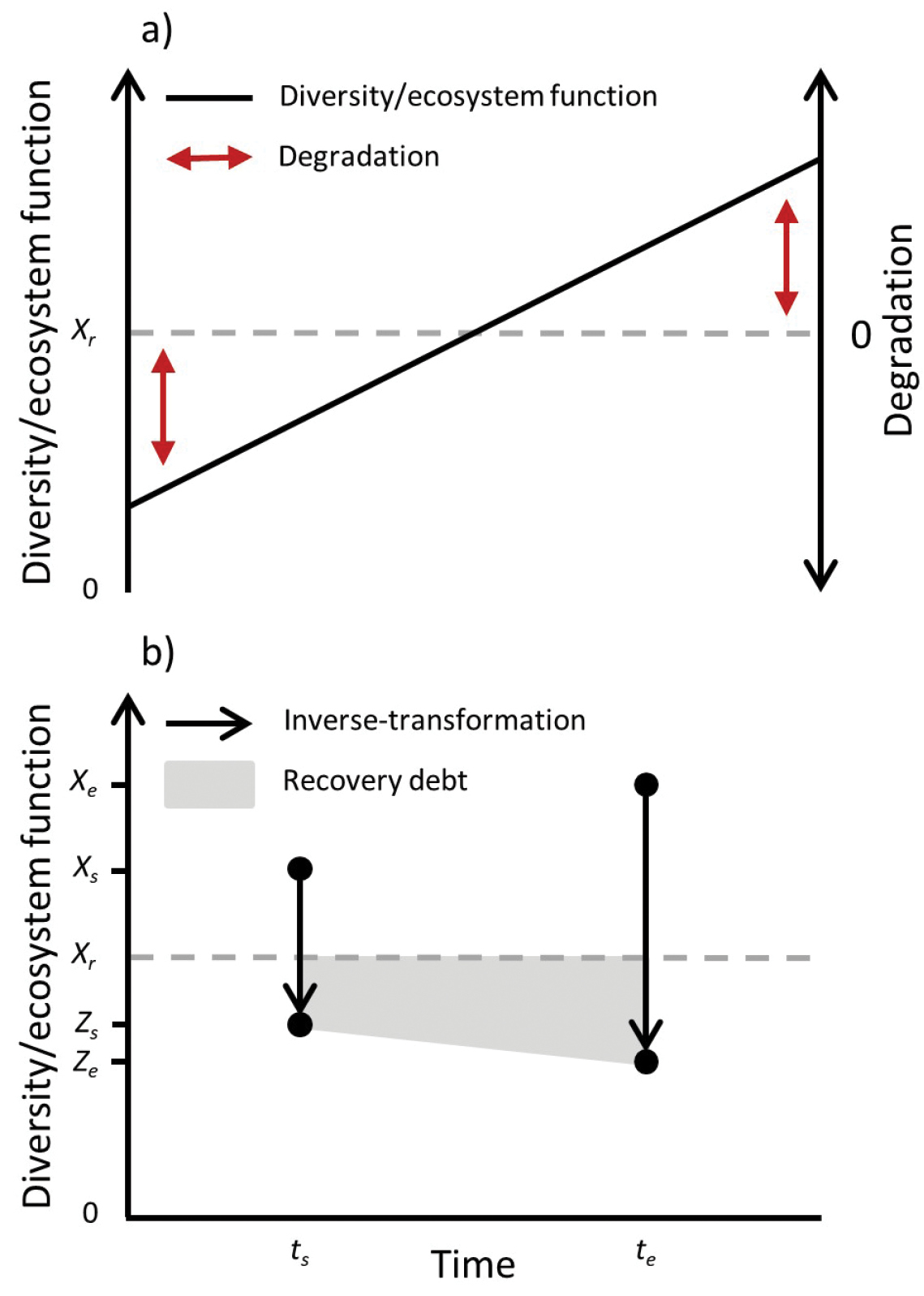
|
||
|
A schematic figure describing how degradation and the recovery debt are estimated in relation to undisturbed and disturbed ecosystem states. a) The difference between diversity/ecosystem function and the magnitude of degradation relative to an undisturbed natural state reference. While diversity/ecosystem function can decrease or increase due to anthropogenic disturbance relative to the undisturbed reference state (Xr, grey dashed line), both lower and higher values than the undisturbed reference state can be considered degradation. It is worth noting, however, that while increase and decrease are neutral descriptors of change, by labelling any deviation from the natural state as degradation we are making a value statement that such change is undesired. b) The influence of the inverse-transformation on the diversity/ecosystem function values and recovery debt. The recovery debt sensuMoreno-Mateos et al. (2017) (the interim reduction of biodiversity and ecosystem functions lost during recovery compared to reference values) depends on the inverse-transformation Zs of the original magnitude of degradation (Xs), the inverse-transformation Ze of the state achieved during recovery (Xe), the time used for recovery (te-ts), and the undisturbed reference state value (Xr, grey dashed line). For simplicity, the undisturbed reference state of the ecosystem (Xr) is depicted as a static line, although in reality each ecosystem type has a dynamic mean natural state surrounded by some variance. |